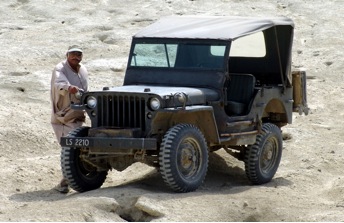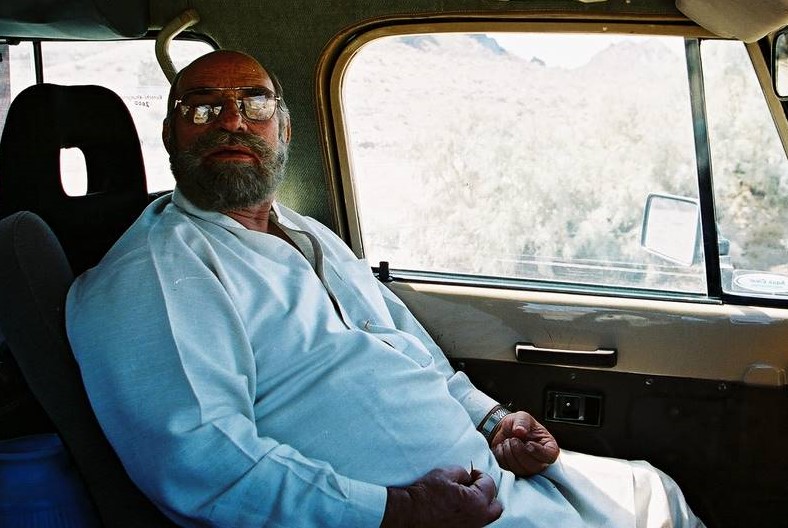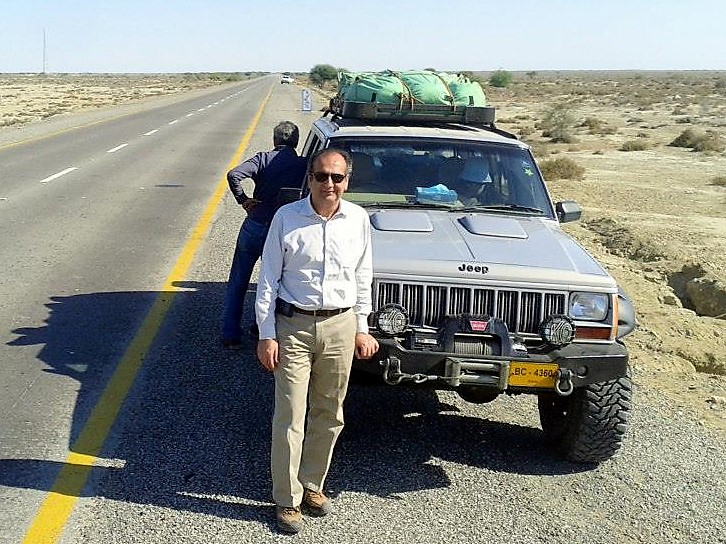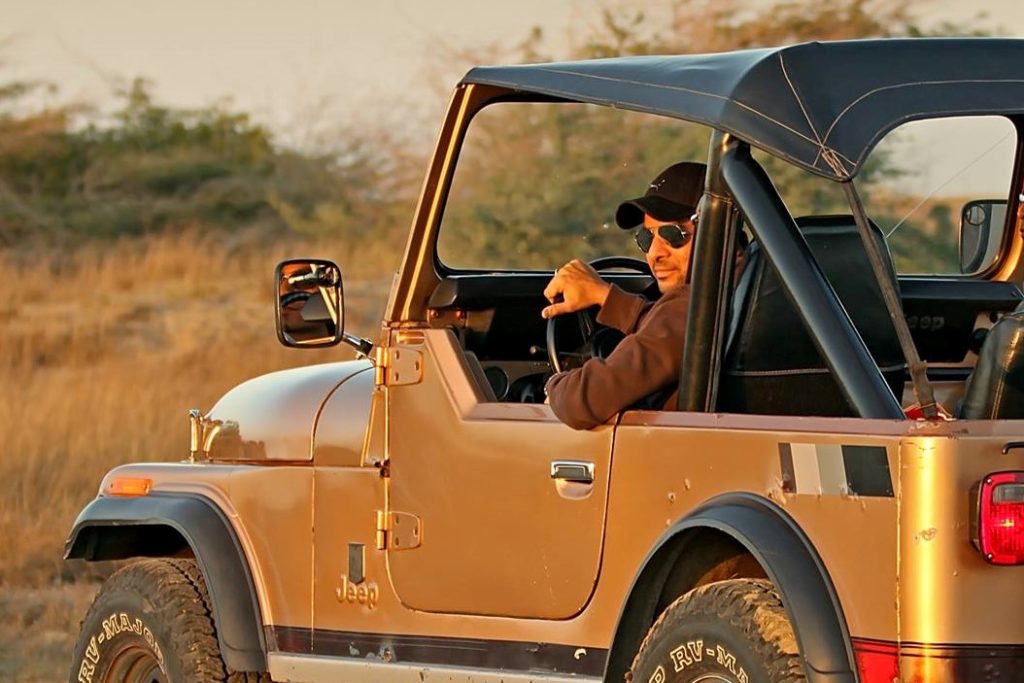24th June 2000: Karachi, Hub, Uthal, Bela, Sunaro (chrome mines), Khuzdar. (Largest settlement on the RCD Highway). Distance: 410 km, Odometer: 12610
Route: The route passes through the industrialized landscape of the SITE area, before leaving Karachi’s sprawling suburbs. Traveling north on the RCD highway the road crosses the Hub River, which marks the border between Sindh and Baluchistan. There is a checkpost at Thana Mocha here. The road then enters the Town of Hub and carries on straight through towards the Somiani beach and the town of Winder.
The road passes within a couple of kilometers of Siranda Lake. Further on, there is a fork in the road; turning west here leads to a dam on the lake. At the small village of Winder there is a bazaar with teashops and simple restaurants. Further on down the road lies the town of Uthal, 115 kilometers from Karachi.
North from Uthal the RCD Highway passes through terrain that alternates between wide expanses of plateau surrounded by mountains, and the rough, barren hills of the Pab Range. The road then carries on through the scattered settlement of Wad, followed soon after by Urnach, where there are a few basic restaurants, teashops and a petrol pump. At Sunaro, set in an open plain, there are extensive chrome mines. The next settlement is Kohan, consisting only of a few houses and a check post. From here the road follows the course of the Porali River, with scattered villages and isolated clumps of date palms along its banks, before eventually emerging onto the Khuzdar plain.
Travelogue:
We sat at the dinning room table with the maps sprawled everywhere charting out the route we would take, it had to be different from the last time. The planning would take us six months to get the fine details right, such as the route, the various modifications to the vehicles and how they would be carried out, booking the hotels and arrangements for the accommodation at the rest houses, informing local officials about our arrival, etc etc.
The final preparations for the trip – packing, last minute shopping, fine-tuning of the 4×4s – all completed the night before, we were all set to move to Hamid’s house early in the morning. We were to assemble at his residence before embarking on the drive across Pakistan. This trip promised to be an exciting expedition.
We reached Hamid’s house at about 10:00 AM. Taimur was late in arriving – a leaking valve stem, which broke as he stepped on it whilst climbing down from the roof rack, had to replaced. The coordinates at Hamid’s house were north 24 49.008, east 067 03545 on the GPS unit.
Final departure time: 11:15 AM Karachi, The Landcruiser’s odometer reading: 12610 km.With an average of four persons per vehicle, our five 4×4s would start the journey at the Omar residence in Karachi and meet up with the rest of the contingent in Islamabad for the rest of the trip. The 4×4s were in the order of, Hamid Omar and his Ford Bronco, the white M38 Willy’s jeep piloted by Khalid Omar, Taimur Mirza and his own version of the Jeep Wrangler, totally self-designed and built at the factory, Imad and his brothers Yaseen and Salman in the latter’s CJ7, and my family and myself in the Landcruiser Prado. The Prado is equipped with all the gadgets and gizmos that you can think of. The latest Garmin III GPS unit, a VCD and CD player and a TV, temperature gauge for outside and inside readings, an altimeter, and adjustable shocks, which will be of help in dampening jounce on the rough terrain. Our vehicles were fully loaded with all sorts of equipment apart from the occupants’ luggage and suitably modified to endure the trying journey that lay ahead.
On the way out of the city, we had the vehicles weighed at the weighstation at the fork on the Shershah road heading towards Hub. The Landcruiser weighed in as the heaviest of the group at 3500kg. The next stop was at the Shell petrol pump on the Hub road. Tire pressures were checked and fuel was topped up. Myra video taped the proceedings as Sabiha rested her elbow on the Bronco’s fender and inhaled a deep puff of roasted Marlboro tobacco smoke, paused for a second and then, in great anticipation of exciting things to come, exhaled the smoke into the morning air.
We crossed the toll plaza into Hub at 12:30 PM. The cool seabreeze blowing from the south brought clouds – a welcome break from the oppressive heat. The clouds grew darker and occassional showers rained down upon us to provide instant relief from the summer heat. These showers would sorely be missed later in the afternoon at Uthal, where we stopped for tea.
By the time we rolled into Winder, at 1:25pm, the rain and clouds had gone and it was getting hot and sunny again with a gusty wind still blowing from the seafront towards the countryside. The visibility towards Kanrach was very poor and dusty; it looked like a dust storm was brewing up on the northern side of the road towards the hills. Taimur was in the lead, followed by myself then Imad, Khalid, and as usual, Hamid trailing behind in the rear. We looked for our police escort along the way but couldn’t find any sign of them. We would report to the levvies post on the way and maybe they could radio them to let them know that we had crossed the town of Hub.
As we approached Uthal, the freshly repaved highway announced its presence with a much improved ride. A note of acknowledgement to the Frontier Works Organization (FWO) here as they have done a tremendous job of repaving the road leading into Uthal and onwards. The roads are much wider now and the curbs vastly improved.
In Uthal, the Department of Wildlife Office would be the venue for our afternoon tea break. At about 2:10 PM in the sweltering heat of the afternoon, the vehicles pulled off the road one by one and lined up at the compound. KFC chicken, parathas, and sandwiches were the fare for the afternoon, finished off with tea. The news at the office was that DFO Iqbal had been transferred to Khuzdar.
Our next stop was the Coastguards checkpost on the outskirts of Uthal. All vehicles passing through this checkpost are checked for smuggling. As the Coastguards proceeded to check our vehicle documents, Taimur had a word with the officer in charge to expedite the process, and we were finally off again after a delay of a few minutes.
It would soon be time to fill up with diesel for the remaining drive to Khuzdar, so we stopped at the Bela petrol pump. This is our usual refueling point returning from camping trips into Balochistan. The Landcruiser took 36 litres in all. Fuel consumption for the driving conditions was quite satisfactory at 12 km per litre.
Outside Bela the terrain changes from a flat plateau to rough barren hills, through which the road cascades as it climbs and descends. The weather was pleasant, cool and overcast, and the drive was very picturesque. There are Pish bushes all around, which resemble ferns, with scattered trees on both sides of the road. It felt as if the road had been carved out through the many small valleys that surrounded us.
We were still about 100 km from Khuzdar when the first sign of vehicular trouble popped up. The brake pedal on Taimur’s jeep had gone lax. Being equipped with an automatic transmission, the jeep doesn’t have the braking effect of the engine like the rest of the manual transmission vehicles. Taimur would need every bit of the jeep’s remaining braking power on the steep climbs and descents of these hills.
At about 5:47pm and 70 km from Khuzdar, we stopped at a tube well pumping out clean and refreshingly cool water. The boys wasted no time in jumping into the holding tank, while the rest of us washed and freshened up. All empty bottles were filled up too. These would prove to be invaluable on long uphill stretches that taxed our engines to the max in the oppressive heat.
The brake drum on the left rear side of Taimur’s jeep was smoking when we made our next pit stop. A metallic grinding noise indicated something was definitely wrong with the brake, so we decided to disassemble it. The return spring on the brake shoe had come loose and the adjustment lever was rubbing on the drum making the metallic noise. The lever and the spring were fixed back into position and the brake started to function normally again. However, our troubles for the day were not over yet. It was about 7.30 PM by the time we were on the road again after fixing the brake. Only a few kilometers down the road, and Imad’s, jeep started to lose powerl. Air bubbles in the fuel line were making it impossible for the engine to stay running, and quite soon the vehicle refused to run at all. Despite our collective efforts, the bubbles persisted. The jeep would now need to be towed the next 50 km to Khuzdar. Khalid graciously obliged and we were underway again. The little white jeep showed off its superior power-to-weight ratio as it towed the heavy equipment and luggage laden CJ-7 up the hills at highway speeds without a problem. We finally reached Khuzdar at 9.30 pm, the staff of the Bolan Mining rest house l waiting for us. The jeeps were unpacked and an absolutely delicious dinner was served. The day came to a relaxing end as we sat on the terrace for a review of the day’s events and later played cricket with Sheheryar till late at night.



